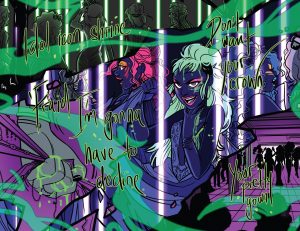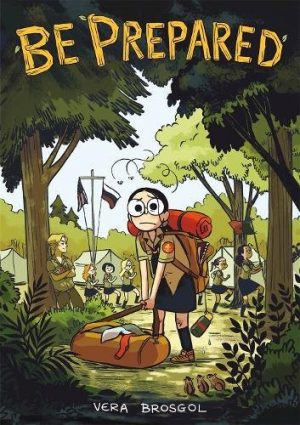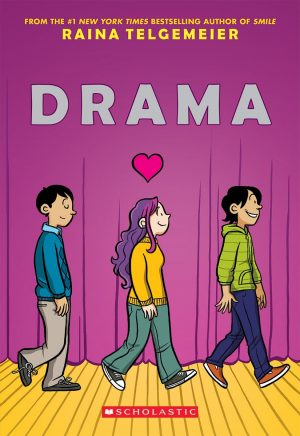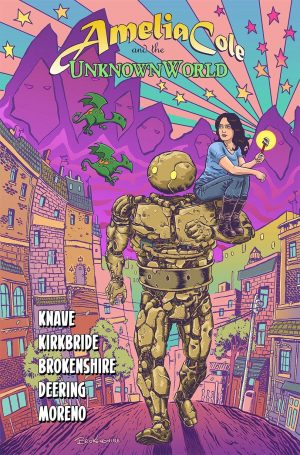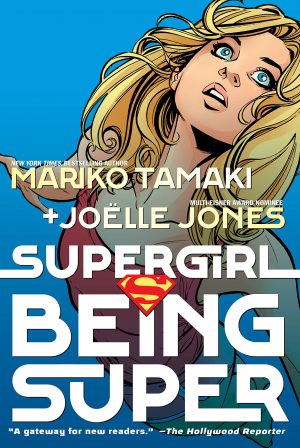Review by Ian Keogh
The Misfits spins out of the Jem and the Holograms series, and throws a greater spotlight on Jem’s great rivals. Following a series of incidents impacting negatively on the group, in Enter the Stingers the Misfits were dropped by their label, and no-one else is willing to take them on, as their reputation for being difficult is widespread. Fortunately there’s a way the Misfits can continue to misbehave and raise their profile significantly at the same time: a reality TV show.
Many of the problems the Misfits have is down to the jealous and competitive nature of their lead singer Pizzazz, but in a sparkling opening chapter Thompson explains why Pizzazz is the person she is. This is relatively subtle, as a strand in the past of her putting the Misfits together is slotted between present day events. It’s a useful structure for a five chapter story with five Misfits in the band, and Kelly Thompson uses each chapter to turn the spotlight onto a different Misfit, bringing out the various band members, some of whom just made up the numbers in their guest slots.
Thompson has a spot on view of the manipulation that occurs in ‘reality’ TV shows, and the personalities and aspirations she builds for the various members are insightful and compelling. The idea of a reality TV show doesn’t impress the band initially, but they once they’ve given it some thought each has a reason for considering the exposure might work for them. However, not many of these reasons are actually connected with the Misfits. Thompson comes up with some smart ideas about why the various Misfits are, well, misfits, and while some are telegraphed, almost all have a poignancy to them, cutting to the essence of each band member. Roxy’s story stands out in a high quality selection. On occasion sometime Jem collaborator Sophie Campbell also contributes to the writing, but as shown by Wet Moon, drama between a large mixed woman cast is her speciality.
Jenn St-Onge drew a short story for the main Jem title without really standing out, but given a series of her own, she’s superb. There’s a real feeling for character that shines through the illustration and because the cast have different musical backgrounds they need a different touch illustrating those, and St-Onge shines through. She’s greatly helped but the colouring of M. Victoria Robado, reducing the multiple flashback scenes to grey and a single colour.
Because this is a story almost complete in itself with no need to perpetuate the dramatic tension beyond relatively realistic limits, and able to share it around, The Misfits is a better graphic novel than all but the best of Jem and the Holograms. Finally getting to know the band beyond Pizazz is a lot of fun. The Misfits also feature heavily in Infinite.

